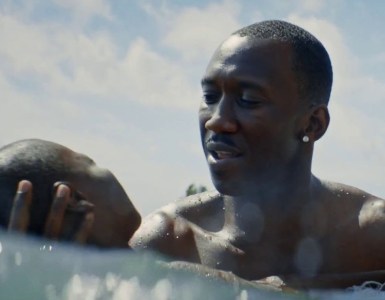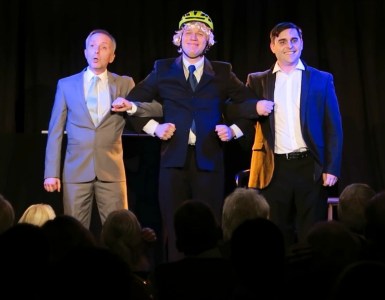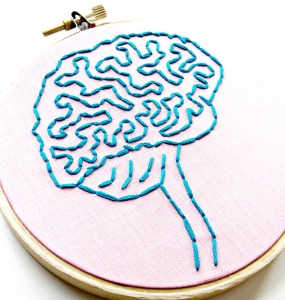After suffering severe skin burns on her third tour as a gunner in Afghanistan, Jess (Kate Fleetwood) returns to Florida and banal domesticity. Not only does she endure debilitating chronic pain - she experiences spasms and is unable to lift her arms or move her head to the side - her life back home revolves around a series of frustratingly wearisome interactions. Nagging arguments with her sister Kacie (Olivia Darnley) over visiting their dementia-suffering mother; bland conversations with her sister’s waster-boyfriend Kelvin (Kris Marshall); awkward catch-ups with her loose-tongued ex Stevie (Ralf Little), who can’t stop mentioning his new wife.
To escape these irritations and relieve her physical agony, Jess is transported back to the snowy Afghan mountains - not via the US Airforce, but Virtual Reality. As Jess dons her VR goggles, domestic furnishings slide away and an avalanche of animation flickers and flutters onto the set’s banked, crater-like walls, burying her in a wintry eden. You probably won’t have heard of it, but ‘Cybertherapy’ is an emerging form of VR with enormous potential. In trials, immersion in VR snowscapes reduced pain for the majority of burn patients by 30% rendering it more effective than highly addictive morphine.
Lindsey Ferrentino’s Ugly Lies The Bone explores VR’s capability to help heal Jess physically as well as emotionally. Despite Jess’ dire circumstances, Ferrentino affords the play a somewhat light tone. Although at times the humour veers too close to a forced American sitcom, it does prevent the play from being unbearably heavy. Similarly Fleetwood’s portrayal of the war-hardened yet fragile Jess draws our sympathy without overplaying her tragedy. The role is physically demanding of Fleetwood as she spasmodically jolts around the stage for nearly the full ninety minutes (no interval).
Even with Fleetwood’s exceptional performance, Ugly Lies The Bone fails to deliver the insight, intrigue or emotion it promises. We learn more about VR’s potential for pain relief from the programme notes than the play itself. Nor do Es Devlin’s set design and Luke Halls’ projections fully capture Jess’ wonder at being transplanted in the digital world. The animation sequences are unspectacular and fail to evoke the same sense of immersion as the VR installation which can be enjoyed after the show (I recommend - if you throw fish at otters they turn rainbow-coloured and flip around on the floor… who knew?).
It is not just Ferrentino’s exploration of VR that feels undeveloped. Ugly Lies The Bone raises many interesting ideas but most remain only half-explored. The trauma of war and Jess’ psychological triggers are touched on in one of the play’s most powerful scenes before being strangely sidelined, just as the potential rekindling of romance with her ex abruptly fizzles out. Meanwhile the play’s most climactic scenes lack impact and moments of closure feel slightly contrived.
Perhaps expecting tidy conclusions goes against Ferrentino’s realistic, unglamorous portrayal of an injured war veteran, but Ugly Lies The Bone feels disjointed rather than intentionally unresolved.
5/10
Ugly Lies The Bone plays at The National until 6 June. Tickets start from £15.
Featured image: Mark Douet, The National.







Add comment